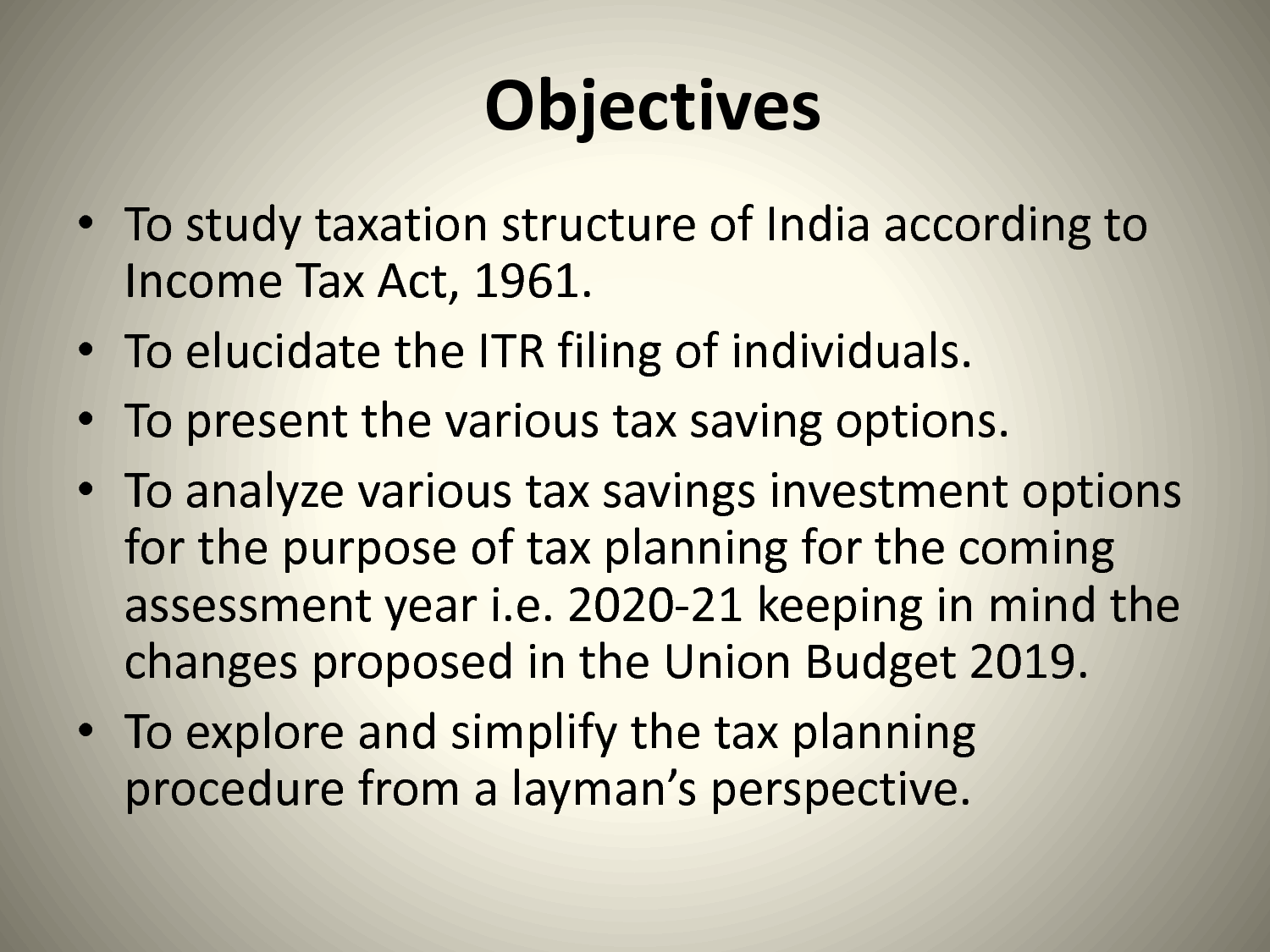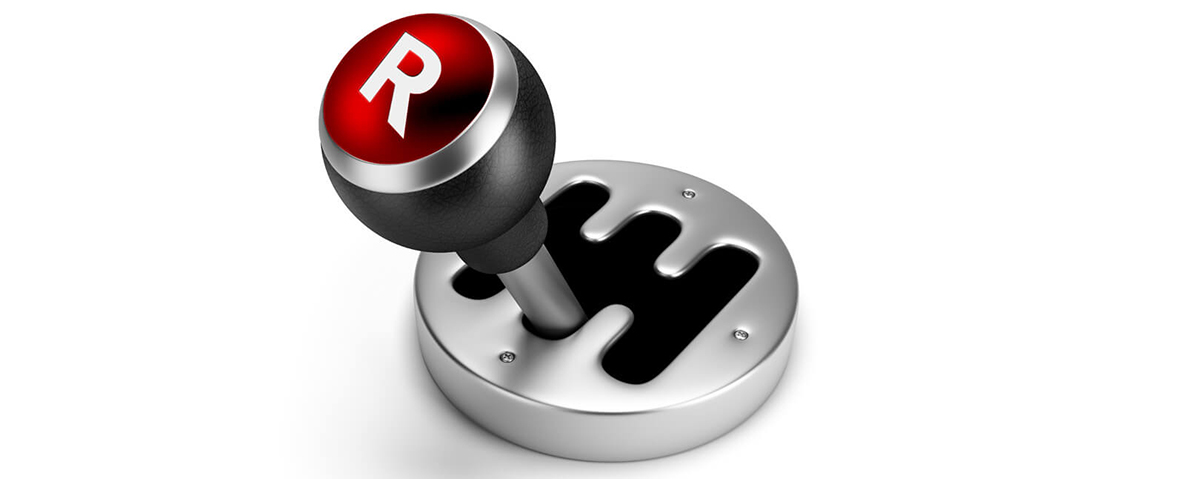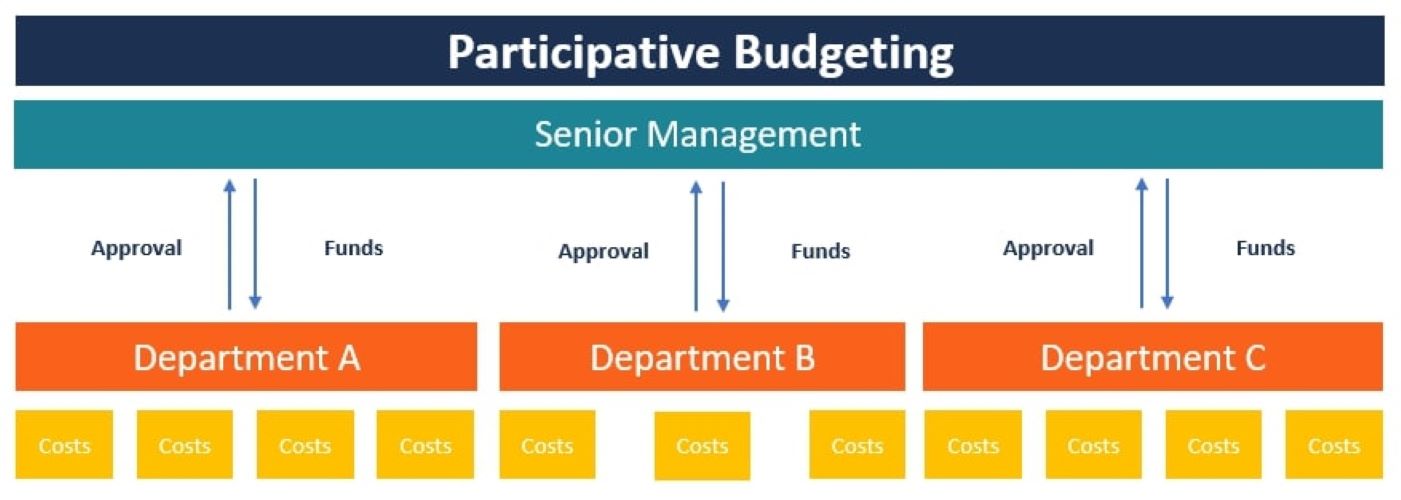Home>Finance>What Is The Purpose Of The Pre-Existing Condition Insurance Plan (PCIP)?


Finance
What Is The Purpose Of The Pre-Existing Condition Insurance Plan (PCIP)?
Published: November 13, 2023
Learn about the purpose of the Pre-Existing Condition Insurance Plan (PCIP) and how it impacts your finances, ensuring coverage for those with pre-existing medical conditions.
(Many of the links in this article redirect to a specific reviewed product. Your purchase of these products through affiliate links helps to generate commission for LiveWell, at no extra cost. Learn more)
Table of Contents
- Introduction
- Overview of the Pre-Existing Condition Insurance Plan (PCIP)
- Eligibility criteria for the PCIP
- Coverage and Benefits Provided by the PCIP
- How to Apply for the PCIP
- Costs Associated with the PCIP
- Limitations and Concerns Regarding the PCIP
- Successes and Failures of the PCIP
- The Future of the PCIP
- Conclusion
Introduction
The Pre-Existing Condition Insurance Plan (PCIP) is a program designed to provide health insurance coverage for individuals who have been denied coverage due to pre-existing medical conditions. This innovative program was established under the Affordable Care Act to ensure that individuals with pre-existing conditions have access to affordable and comprehensive health insurance.
For many years, individuals with pre-existing conditions faced significant challenges in obtaining health insurance. Insurance companies often denied coverage, imposed high premiums, or placed restrictions on coverage for those with pre-existing conditions. This left many individuals without the necessary healthcare coverage they needed to manage their conditions and receive necessary medical treatment.
The PCIP was established to address this issue and provide a temporary solution for those who were unable to obtain health insurance due to pre-existing conditions. The program was implemented in 2010 and was available until 2014 when it transitioned into the new health insurance marketplaces created by the Affordable Care Act.
The primary goal of the PCIP was to bridge the gap in healthcare coverage for individuals with pre-existing conditions until the full implementation of the Affordable Care Act. It aimed to provide them with affordable insurance options and ensure they had access to essential healthcare services without being subject to exorbitant premiums or coverage limitations.
Throughout its existence, the PCIP played a crucial role in providing necessary health insurance coverage to thousands of individuals with pre-existing conditions. It served as a lifeline, allowing them to receive the medical care they needed, manage their conditions effectively, and improve their overall quality of life.
In the following sections, we will explore the eligibility criteria, coverage options, application process, costs, limitations, and the future of the PCIP. We will delve into the successes and failures of the program, as well as the implications it has had on the healthcare landscape for those with pre-existing conditions.
Overview of the Pre-Existing Condition Insurance Plan (PCIP)
The Pre-Existing Condition Insurance Plan (PCIP) was a federal program established under the Affordable Care Act to provide health insurance coverage for individuals who had been denied coverage due to pre-existing medical conditions. The program aimed to ensure that individuals with pre-existing conditions had access to affordable and comprehensive health insurance options.
The PCIP was available to both adults and children who were legal residents of the United States and had pre-existing conditions. These conditions could include chronic illnesses, disabilities, or other medical conditions that would typically lead to denied coverage or excessively high premiums from private insurance providers.
The program offered a wide range of coverage options, including doctor visits, hospital stays, prescription medications, preventive care, mental health services, and more. PCIP coverage was comparable to standard health insurance plans, providing individuals with the necessary medical care they needed to manage their pre-existing conditions effectively.
Furthermore, the PCIP ensured that individuals were not subjected to waiting periods, exclusions for pre-existing conditions, or limited benefits. This eliminated the barriers that individuals with pre-existing conditions often faced when trying to obtain health insurance coverage. With the PCIP, they had the peace of mind knowing that they would receive the medical care they needed without worrying about high costs or limited coverage.
It’s important to note that the PCIP was a temporary program designed to bridge the gap in healthcare coverage for individuals with pre-existing conditions until the full implementation of the health insurance marketplaces. These marketplaces, also known as insurance exchanges, were established under the Affordable Care Act to provide individuals with a variety of health insurance options, including coverage for pre-existing conditions.
Overall, the PCIP played a critical role in ensuring that individuals with pre-existing conditions could access affordable and comprehensive health insurance coverage. It provided them with the healthcare services they needed to manage their conditions effectively and improved their overall quality of life. In the following sections, we will discuss the eligibility criteria, coverage and benefits, application process, costs, limitations, and the future of the PCIP.
Eligibility criteria for the PCIP
In order to qualify for the Pre-Existing Condition Insurance Plan (PCIP), individuals had to meet certain eligibility criteria. These criteria were put in place to ensure that the program reached those who faced challenges in obtaining health insurance due to pre-existing conditions. The eligibility requirements for the PCIP were as follows:
- Individuals had to be legal residents of the United States. This meant that they needed to provide proof of their residency status, such as a valid Social Security number or immigration documents.
- Applicants needed to provide evidence of being denied health insurance coverage due to a pre-existing condition. This could be in the form of a denial letter from a private insurance provider or proof of unaffordable premiums based on the individual’s medical history.
- Applicants had to demonstrate that they had been uninsured for at least six months before applying for the PCIP. This requirement aimed to target individuals who had been unable to secure health insurance due to their pre-existing condition.
- Individuals had to have a pre-existing condition that met the criteria set by the PCIP. The program covered a wide range of pre-existing conditions, including chronic illnesses, disabilities, and other medical conditions that would typically result in denied coverage or high premiums.
- Enrollees had to provide medical documentation supporting their pre-existing condition. This could include medical records, test results, or documentation from healthcare providers that confirmed the individual’s medical condition.
It’s important to note that the eligibility criteria may have varied slightly depending on the state. While the PCIP was a federal program, some states had their own additional requirements or alternative programs in place to assist individuals with pre-existing conditions.
Overall, the eligibility criteria for the PCIP were designed to ensure that the program reached those who truly needed assistance in obtaining health insurance coverage. By targeting individuals who had been denied coverage and had been uninsured for a significant period of time, the PCIP aimed to provide them with accessible and affordable healthcare options to manage their pre-existing conditions effectively.
Coverage and Benefits Provided by the PCIP
The Pre-Existing Condition Insurance Plan (PCIP) offered comprehensive coverage and a wide range of benefits to individuals with pre-existing conditions. The program aimed to ensure that participants had access to the healthcare services they needed to manage their conditions effectively. The coverage and benefits provided by the PCIP included:
- Doctor visits: PCIP participants had coverage for visits to primary care physicians, specialists, and other healthcare providers. These visits allowed individuals to receive regular check-ups, consultations, and medical advice specific to their pre-existing conditions.
- Hospital stays: The PCIP provided coverage for inpatient hospital care, including surgeries, medical treatments, and recovery stays. This ensured that individuals with pre-existing conditions had access to necessary hospital services and procedures.
- Prescription medications: PCIP coverage included prescription drug benefits, allowing participants to obtain necessary medications to manage their pre-existing conditions. This helped individuals afford the medications that were essential for their health and well-being.
- Preventive care: The PCIP recognized the importance of preventive healthcare and offered coverage for preventive services such as vaccinations, screenings, and wellness visits. These services aimed to detect and prevent potential health issues related to pre-existing conditions.
- Mental health services: The PCIP acknowledged that mental health is an integral part of overall well-being. Therefore, the program provided coverage for mental health services, including therapy sessions and mental health medications.
- Emergency care: PCIP participants were covered for emergency medical care, ensuring that they had access to immediate and necessary treatment during unforeseen medical emergencies related to their pre-existing conditions.
- Laboratory tests and diagnostic procedures: The PCIP covered a wide range of diagnostic tests and laboratory procedures, including blood tests, imaging scans, and other necessary tests to aid in the diagnosis and management of pre-existing conditions.
- Chronic disease management: PCIP participants had access to resources and programs aimed at managing and controlling chronic diseases. This could include disease-specific education, counseling, and support to help individuals effectively manage their conditions.
These coverage options and benefits provided by the PCIP were instrumental in ensuring that individuals with pre-existing conditions had comprehensive and affordable healthcare services. The program aimed to address the specific needs of individuals with pre-existing conditions and provide them with the necessary support to lead healthier and more fulfilling lives.
How to Apply for the PCIP
Applying for the Pre-Existing Condition Insurance Plan (PCIP) was a straightforward process designed to ensure that individuals with pre-existing conditions could easily access the coverage they needed. Here are the steps to apply for the PCIP:
- Gather necessary documentation: Before starting the application process, gather all the necessary documentation to support your eligibility for the PCIP. This may include proof of residency, denial letters from insurance providers, evidence of being uninsured for at least six months, and medical documentation of your pre-existing condition.
- Visit the PCIP website: Access the official PCIP website, which provides detailed information on the program and the application process. The website will guide you through the necessary steps and provide resources to assist with the application.
- Choose your state: Select the state in which you reside from the dropdown menu on the PCIP website. Depending on the state, there may be specific variations or additional eligibility requirements for the PCIP.
- Fill out the application: Complete the online PCIP application form. This form will require you to provide personal information, details about your pre-existing condition, and information about your previous health insurance coverage. Be sure to provide accurate and complete information to expedite the application process.
- Submit supporting documentation: After completing the application form, you may be required to upload or mail in the supporting documentation mentioned earlier. Follow the instructions provided by the PCIP to submit these documents promptly.
- Review and verify information: Carefully review all the information provided on the application form before submitting it. Verify that the details are accurate and up-to-date to avoid any delays or complications in the application process.
- Submit the application: Once you have reviewed and verified the information, submit your PCIP application. The PCIP website will provide confirmation of the successful submission and provide further instructions regarding the next steps.
- Follow up on your application: After submitting your PCIP application, you may be contacted by a PCIP representative for any additional information or clarification. Stay in touch with the PCIP and respond promptly to any requests for further documentation or information.
- Receive your PCIP coverage: If your application is approved, you will receive notification of your acceptance into the PCIP. You will then be provided with the details of your coverage, including information about how to access the benefits and services provided under the program.
It’s important to note that while the PCIP program is no longer accepting new applications, the application process and steps outlined above were applicable during the program’s active years. If you are seeking healthcare coverage for a pre-existing condition, explore other options available under the Affordable Care Act or consult with a healthcare insurance professional for guidance.
By following these steps and providing the necessary documentation, you could access the PCIP coverage and receive the healthcare services you need to manage your pre-existing conditions effectively.
Costs Associated with the PCIP
The Pre-Existing Condition Insurance Plan (PCIP) aimed to provide affordable health insurance coverage to individuals with pre-existing conditions. The program took steps to ensure that costs associated with enrollment and healthcare services were reasonable and accessible for participants. Here are the main costs associated with the PCIP:
- Premiums: PCIP participants were required to pay monthly premiums for their coverage. The amount of the premium varied depending on the state and the participant’s age. However, the PCIP made efforts to keep premiums affordable, taking into account the financial circumstances of individuals with pre-existing conditions.
- Deductibles: Like many health insurance plans, the PCIP had deductibles, which were the amount participants had to pay out of pocket before the plan began covering their healthcare expenses. These deductibles varied depending on the state and the specific plan chosen by the participant.
- Co-payments and coinsurance: PCIP participants were responsible for co-payments and coinsurance, which were a percentage of the costs of medical services. Co-payments were fixed amounts paid for specific services, such as doctor visits, while coinsurance required participants to pay a portion of the total costs for services, such as hospital stays or procedures.
- Prescription drug costs: PCIP coverage included prescription drug benefits, but participants were responsible for the associated costs. This typically involved paying a portion of the prescription medication cost in the form of co-payments or coinsurance.
- Out-of-pocket maximums: To protect PCIP participants from excessive medical costs, the program set out-of-pocket maximum limits. Once participants reached this maximum amount in a given year, the PCIP covered all additional eligible medical expenses for the remainder of the year.
The PCIP took steps to make sure that the costs associated with the program were reasonable and accessible for participants. It aimed to strike a balance between offering quality coverage and keeping premiums and out-of-pocket expenses affordable for individuals with pre-existing conditions.
It’s important to note that the specific costs associated with the PCIP varied depending on factors such as the state, the participant’s age, and the plan chosen. Participants were encouraged to review the details of the specific PCIP plan available in their state to understand the costs and coverage comprehensively.
Overall, the PCIP aimed to provide individuals with pre-existing conditions with accessible and affordable healthcare coverage. By considering the financial circumstances of participants and ensuring reasonable costs, the program aimed to alleviate the financial burden of managing pre-existing conditions while providing necessary healthcare services.
Limitations and Concerns Regarding the PCIP
While the Pre-Existing Condition Insurance Plan (PCIP) aimed to address the healthcare needs of individuals with pre-existing conditions, there were certain limitations and concerns associated with the program. These limitations and concerns included:
- Limited enrollment capacity: The PCIP had a limited enrollment capacity, which meant that not all individuals with pre-existing conditions could be accommodated. This led to waiting lists and potential delays in accessing coverage, leaving some individuals without the immediate healthcare assistance they needed.
- High costs for some participants: Although the PCIP aimed to provide affordable coverage, the premiums and out-of-pocket expenses could still be high for some individuals. Depending on factors such as the state and the specific plan chosen, some participants found it challenging to afford the costs associated with the PCIP.
- Transitional nature of the program: The PCIP was intended as a temporary solution until the full implementation of the health insurance marketplaces. This transitional nature raised concerns about the long-term viability and sustainability of the program, leaving some individuals uncertain about the stability of their healthcare coverage.
- Limited provider networks: Participants in the PCIP often faced limitations in terms of the provider networks available to them. This meant that they may have had to seek care from a more limited selection of healthcare providers, potentially impacting their choice of doctors and specialists.
- Varying coverage options by state: The PCIP operated at the state level, leading to variations in coverage options and eligibility requirements from state to state. This created disparities in access to healthcare services and coverage for individuals with pre-existing conditions depending on where they lived.
- Concerns regarding program sustainability: The cost and operational challenges of providing comprehensive coverage for individuals with pre-existing conditions raised concerns about the long-term sustainability of the PCIP. Some critics questioned whether the program would be able to continue meeting the needs of those with pre-existing conditions in the future.
It’s important to note that the PCIP was an innovative attempt to address the healthcare disparities faced by individuals with pre-existing conditions. While it had limitations and faced concerns, the program provided crucial coverage for many participants who had previously been denied or struggled to access affordable health insurance.
As the PCIP transitioned into the health insurance marketplaces established by the Affordable Care Act, it paved the way for more comprehensive and accessible healthcare coverage for individuals with pre-existing conditions. The lessons learned from the PCIP helped shape the ongoing efforts to improve healthcare access and affordability for all individuals, regardless of their medical history.
Successes and Failures of the PCIP
The Pre-Existing Condition Insurance Plan (PCIP) had both successes and failures in its mission to provide healthcare coverage for individuals with pre-existing conditions. Here are some of the notable successes and failures of the program:
Successes:
- Expanded coverage: The PCIP successfully expanded access to healthcare coverage for individuals with pre-existing conditions who had previously been denied coverage or faced exorbitant premiums. It provided a lifeline for those who were unable to obtain health insurance through traditional channels.
- Comprehensive coverage options: The PCIP offered comprehensive coverage options, including doctor visits, hospital stays, prescription medications, preventive care, mental health services, and more. This ensured that participants had access to a wide range of healthcare services to manage their pre-existing conditions effectively.
- Eliminated coverage limitations: The PCIP removed barriers that individuals with pre-existing conditions often faced, such as waiting periods and exclusions for pre-existing conditions. This allowed participants to receive the necessary medical care without being subject to coverage limitations.
- Improved quality of life: By providing accessible healthcare coverage, the PCIP significantly improved the quality of life for individuals with pre-existing conditions. Participants were able to receive the medical care they needed, effectively manage their conditions, and experience enhanced overall well-being.
- Transitional success: As a transitional program, the PCIP successfully served its purpose in providing temporary coverage until the full implementation of the health insurance marketplaces. It played a crucial role in ensuring that individuals with pre-existing conditions had access to healthcare during this transitional period.
Failures:
- Limited enrollment capacity: One of the major failures of the PCIP was its limited enrollment capacity. The program could not accommodate all individuals with pre-existing conditions, leading to waiting lists and delays in accessing coverage. This left some individuals without immediate healthcare assistance.
- Cost challenges: While the PCIP aimed to provide affordable coverage, the costs associated with the program could still be high for some participants. Premiums and out-of-pocket expenses posed challenges for individuals who were already facing financial burdens due to their pre-existing conditions.
- Provider network limitations: PCIP participants often faced limitations in terms of available healthcare providers within the program’s network. This restricted their choices and potentially limited access to specific doctors or specialists, affecting the continuity of care for some individuals.
- Uncertainty about program continuity: The transitional nature of the PCIP raised concerns about its long-term viability and sustainability. Many participants had concerns about the stability of their healthcare coverage as the program transitioned into the health insurance marketplaces.
- Varying coverage options: The PCIP’s operation at the state level resulted in variations in coverage options and eligibility requirements from state to state. This created disparities in access to healthcare services and coverage for individuals with pre-existing conditions depending on their state of residence.
Overall, while the PCIP had its share of successes in expanding healthcare coverage and improving the quality of life for individuals with pre-existing conditions, it also faced challenges and limitations that affected its effectiveness. Nonetheless, the program served as a stepping stone towards broader healthcare reform, paving the way for more comprehensive and accessible healthcare coverage for all individuals, regardless of their medical history.
The Future of the PCIP
The Pre-Existing Condition Insurance Plan (PCIP) played an important role in providing temporary coverage for individuals with pre-existing conditions until the full implementation of the health insurance marketplaces. Although the PCIP is no longer accepting new enrollees, its legacy has had a lasting impact on healthcare accessibility and affordability for those with pre-existing conditions.
With the establishment of the health insurance marketplaces under the Affordable Care Act, individuals with pre-existing conditions now have more options for obtaining comprehensive and affordable healthcare coverage. The marketplaces offer a variety of health insurance plans that prohibit denials based on pre-existing conditions and provide subsidies to help make coverage more affordable.
The success of the PCIP in providing coverage for individuals with pre-existing conditions demonstrated the need for these individuals to have access to healthcare services without facing excessive costs or coverage limitations. As a result, the provisions within the Affordable Care Act, including the prohibition of coverage denials and the implementation of subsidies, have been crucial in ensuring continued healthcare coverage for individuals with pre-existing conditions.
It is important to note that there have been ongoing discussions regarding the future of healthcare and the potential need for additional reforms. As healthcare policies evolve, it will be important to prioritize and protect the interests of individuals with pre-existing conditions. This includes maintaining provisions that ensure affordable coverage options, comprehensive benefits, and wider networks of healthcare providers.
Efforts are being made to improve the affordability and accessibility of healthcare for all individuals, including those with pre-existing conditions. This includes exploring ways to reduce healthcare costs, expand coverage options, and enhance the quality of care provided. Ongoing legislative and regulatory actions aim to address the ongoing challenges faced by individuals with pre-existing conditions and ensure that they have access to the care they need.
Furthermore, advancements in medical research and technology hold the potential to improve the management and treatment of pre-existing conditions. As new treatments and therapies are developed, there is an opportunity to enhance the quality of care offered to individuals with pre-existing conditions, leading to improved health outcomes.
The future of the PCIP lies in building upon the progress made towards greater healthcare coverage for individuals with pre-existing conditions. It requires continued collaboration and commitment from policymakers, healthcare providers, insurance companies, and advocacy groups to ensure that healthcare remains accessible, affordable, and comprehensive for all individuals, regardless of their medical history.
As healthcare systems continue to evolve and adapt, the lessons learned from the PCIP will serve as a foundation for future initiatives aimed at addressing the specific needs of individuals with pre-existing conditions and ensuring that they have access to the care and support necessary to lead healthy and fulfilling lives.
Conclusion
The Pre-Existing Condition Insurance Plan (PCIP) was a pioneering program that sought to address the healthcare disparities faced by individuals with pre-existing conditions. By providing temporary coverage, the PCIP successfully expanded access to health insurance for those who had previously been denied coverage or faced exorbitant premiums.
Despite its limitations and challenges, the PCIP played a crucial role in improving the quality of life for individuals with pre-existing conditions. It offered comprehensive coverage options, eliminated coverage limitations, and provided much-needed financial relief for participants. The program demonstrated the importance of ensuring affordable and accessible healthcare for individuals with pre-existing conditions.
As the PCIP transitioned into the health insurance marketplaces, it laid the groundwork for broader healthcare reform. The provisions within the Affordable Care Act, influenced by the successes and lessons learned from the PCIP, ensured that individuals with pre-existing conditions are no longer denied coverage and have access to affordable healthcare options.
The future of healthcare for individuals with pre-existing conditions rests on continued efforts to improve affordability, accessibility, and quality of care. Ongoing legislative actions and advancements in medical research will shape the policies and treatments available to individuals with pre-existing conditions.
Although the PCIP is no longer accepting new enrollees, its impact will continue to resonate. It serves as a reminder of the progress made in addressing the healthcare needs of individuals with pre-existing conditions. The experiences and successes of the PCIP will guide future initiatives aimed at providing comprehensive and affordable healthcare coverage for all individuals, regardless of their medical history.
Ultimately, the PCIP reinforced the understanding that individuals with pre-existing conditions deserve equal access to healthcare. It paved the way for a more inclusive and compassionate healthcare system, where individuals are not defined by their medical history but are given the opportunity to lead healthy and fulfilling lives.














